🎨 An emblematic painting between nature and poetry
In the enchanted garden of Giverny, Claude Monet gives birth to one of his most famous motifs: the Japanese bridge. Painted in oil on canvas, this painting expresses the perfect union between pictorial art and living nature, between the artist's hand and the breath of the landscape. More than a simple representation, Monet's Japanese bridge is a gateway to emotion, light, and silence.
Sous les touches vibrantes de vert, de mauve et d’ocre, le regard se pose sur l’arche élégante du pont, traversant l’étang paisible, orné de nénuphars. Ce lieu, façonné de ses mains par Monet, devient un sujet inépuisable, un reflet de sa sensibilité artistique et de sa quête de beauté.

At Alpha Reproduction, we pay tribute to this masterpiece through faithful and hand-painted reproductions, recreating the poetic breath of the original. This painting invites inner contemplation, and naturally stands out as a centerpiece in a refined interior.
🏡 Claude Monet and Giverny – An intimate connection with nature
When Claude Monet discovers Giverny in 1883, he is immediately captivated by the peaceful charm of this Norman village. He acquires a house with a vast garden that he will transform over the years into a true work of plant art, reflecting his sensitive gaze on the world. In Giverny, the painter stops traveling across France: he finally finds his open-air studio.
Monet does not just observe nature: he composes it, shapes it, cultivates it with the meticulousness of a gardener and the eye of an artist. The water garden, with its pond bordered by water lilies and its arched wooden Japanese bridge, is the fruit of this alchemy between pictorial creation and landscape design. Influenced by the Japanese prints he collects, he imagines an oriental decor, conducive to daydreaming, silence, and diffuse light.
This garden then becomes much more than a subject: it is the living reflection of his impressionist art, nourished by nature in perpetual evolution. Every hour of the day, every season transforms the landscape, offering the artist infinite variations of shapes and colors to transcribe onto the canvas.
The Japanese bridge paintings, painted from this intimate place, carry within them the memory of a beloved place, of an artist rooted in the simple beauty of things.
🌸 Monet's Japanese Bridge – Birth of an iconic motif
Around 1895, Claude Monet had a small wooden bridge inspired by Japanese gardens built in his water garden, whose curved and elegant lines contrast with the lush vegetation surrounding it. From then on, this bridge becomes a central motif of his painting, a subject he will revisit with increasing intensity for nearly three decades.
La naissance du tableau du pont japonais de Monet marque un tournant dans sa carrière. L’artiste ne cherche plus à capter la nature extérieure, mais à interpréter le paysage intérieur, celui de son propre jardin, qu’il façonne et contemple avec une attention quasi spirituelle. Il peint ce pont non pas comme un objet fixe, mais comme un élément vivant, baigné de lumière, mouvant selon les reflets et les saisons.
This motif is not trivial: it embodies Monet's attraction to Japanese aesthetics – pure, delicate, organic – and becomes the symbol of a meeting between East and West, between tradition and modernity. Through this bridge, Monet also crosses an artistic threshold: that of the search for total immersion in nature, in a pictorial space where perspective fades in favor of sensation.
The Japanese bridge thus becomes one of the most powerful emblems of his work, celebrated worldwide for its gentle beauty, its plant harmony, and its ability to soothe the soul.
👁️ Visual analysis of the Japanese bridge
Dans les tableaux représentant le pont japonais, Claude Monet offre une vision sensorielle plus qu’une description réaliste. L'œil ne se fixe sur aucun détail précis, mais se laisse bercer par un ensemble de touches légères et vibrantes, qui donnent vie à la lumière et à l’eau. Le pont lui-même se fond dans la composition, comme s’il faisait partie intégrante du paysage végétal.
The arched structure of the bridge, painted with deep greens or shades of lilac, crosses the scene like a fluid line, suspended above the floating water lilies. The gaze then glides between the shimmering reflections of the water, the cascading foliage, and the plays of light filtered by the sky.
Monet does not seek to imitate nature: he restores its intimate perception, that of a suspended moment, captured in all its fragility. He layers colors with a soft, almost vaporous palette, making each canvas airy, floating, dreamlike.
The painting reads like an immersion: one does not look at the bridge, one crosses it, one enters it with the senses. This is what makes this work so contemporary: it invites one to feel rather than to observe. And each reproduction of the Japanese bridge allows one to bring this pure emotion, this silent dialogue between man and nature, into one's home.
🌿 Symbolism of the Japanese bridge in Monet's work
Au-delà de son apparence bucolique, le pont japonais de Monet est chargé d’une symbolique profonde. Il relie deux rives, deux mondes : celui du visible et celui de l’invisible, du réel et de l’imaginaire. Dans l’univers de Claude Monet, ce pont devient un passage vers l’intimité du paysage, une traversée vers l’émotion.

In Japanese culture, bridges are often associated with places of meditation and spiritual transformation. Monet draws inspiration from this without ever imitating, integrating this philosophy of silence and suspended time into his own pictorial language. His Japanese bridge is not just a decorative element: it is a axis of serenity, an anchor point in the lush vegetation.
Through its many representations, the bridge also becomes a discreet self-portrait of the artist. It symbolizes his quest for harmony, his withdrawal from the tumult of the world, and his desire to paint not what he sees, but what he feels. Each canvas becomes a meditation, an echo of nature seen with the eyes of the heart.
In a contemporary interior, this work still resonates with the same strength: the painting of the Japanese bridge invites us to slow down, to contemplate, to create a space of calm in the frantic pace of our modern lives. It is an art of living as much as an art to admire.
🌺 Monet's Japanese garden in Giverny – A living decor
In Giverny, Claude Monet does not just plant a garden: he composes it like a living canvas. The water garden, where his famous Japanese bridge stands, is a work in perpetual motion, orchestrated with the sensitivity of a painter and the soul of a poet.
Inspired by Japanese zen gardens, Monet arranged this place according to his own aesthetic codes: pond with water lilies, swaying weeping willows, bamboos, azaleas, water irises… Each plant is chosen for its color, texture, and behavior in light. The garden becomes an open-air laboratory, where each flower reflects an intention, an emotion, an atmosphere.

The Japanese bridge, painted in green, gracefully integrates with this lush vegetation. It does not dominate: it converses, it almost fades away, as if it has always belonged to the landscape. The calm water, like a mirror, captures the changing reflections of the sky and foliage. Everything is fluidity, breath, silence.
This garden is not just a backdrop: it is the very source of Monet's inspiration, a place of retreat and contemplation. By painting this space he has shaped, the artist literally enters his own creation. And through each faithful reproduction of these peaceful scenes, it is a fragment of this vegetal paradise that we invite you to welcome into your home.
🖌️ The different versions of the Japanese bridge
Between 1899 and 1924, Claude Monet created nearly thirty paintings depicting the Japanese bridge in his garden. These works, although centered on the same motif, reveal a striking diversity of colors, styles, and emotions. They testify to the artistic evolution of the painter, his changing view of nature and of himself.
Les premières versions, datées de 1899, offrent une composition claire et structurée : le pont apparaît au centre, les nymphéas flottent à la surface, les feuillages se dressent avec délicatesse. La palette est douce, lumineuse, fidèle à l’esthétique impressionniste. Le regard est guidé, la scène paisible, presque photographique dans sa quiétude.
Over the years, Monet gradually moves away from precise representation. The forms fade, the outlines dissolve, the colors intensify. In his later canvases, the bridge becomes almost abstract, drowned in a whirlpool of vegetation. The artist then paints more with memory than with his eyes, letting pure emotion and deep sensation speak.
These multiple versions of the Japanese Bridge painting are today preserved in prestigious collections: the Metropolitan Museum of New York, the National Gallery of London, the Musée d’Orsay, and of course, the Monet's House in Giverny, which keeps its spirit alive.
Through our canvas reproductions, you have the opportunity to choose the interpretation that touches you the most: more figurative or more expressive, brighter or more enveloping. Each version tells a different facet of the same place, of the same soul.
🖼️ Monet's Japanese bridge in the history of art
In the vast panorama of the history of painting, Monet's Japanese bridge occupies a special place. Not only does it illustrate the culmination of the Impressionist approach, but it also announces, through its formal freedom, the emergence of pictorial modernity. This painting is a turning point between observed nature and felt nature.
With this motif, Monet asserts that the artwork should no longer imitate reality, but translate an inner impression, a perception in motion. He frees painting from classical perspective, from narration, and makes color and light the true subjects of the painting. In this, his Japanese bridges profoundly influence 20th-century artists: Matisse, Rothko, or even Kandinsky, see it as a call to paint the invisible.
The inspiration from Japan — prints by Hokusai, zen gardens, floral minimalism — also marks the history of Western art. Monet does not copy the East, he merges it with his own perspective, creating a new, intimate, contemplative visual language.
Even today, the painting of the Japanese bridge is studied in art schools, admired in museums, sought after by art lovers and interior decorators. It transcends time without losing its freshness, its ability to move and soothe.
Integrating it into a living space means welcoming a piece of history into your home, but also a philosophy: that of slowness, simple beauty, and the harmony found between man and nature.
🎁 Why choose a reproduction of Monet's Japanese bridge?
Adopting a reproduction of Monet's Japanese bridge is much more than acquiring a decorative work: it is bringing into your home a breath of poetry, a vibration of nature, a window open to calm. This painting embodies a form of timeless visual elegance, which touches the soul without ever imposing its presence.
Each version of the Japanese bridge carries a soothing atmosphere, ideal for creating a cocoon of serenity in your home. Its fluid composition, its green, mauve, or golden tones, and its gentle plant energy integrate well into both contemporary decor and a more classic or bohemian universe.
Beyond its aesthetics, this work is a strong symbol: it evokes balance, passage, softness. Giving or gifting this painting is to affirm an artistic sensitivity, a search for peaceful beauty, a desire to slow down, to breathe, to feel.
At Alpha Reproduction, each reproduction is hand-painted with fidelity, capturing not only the colors but also the emotion of the original gesture. A painting of the Japanese bridge thus becomes a decorative centerpiece, but also a daily experience of harmony and depth.
🎨 A hand-painted reproduction: the quality of Alpha Reproduction
At Alpha Reproduction, each painting of the Japanese bridge by Monet is recreated with the same requirement that animated the artist: that of authenticity, light, and emotion. We do not offer simple digital prints, but fully hand-painted reproductions, in oil, on high-quality linen or cotton canvas.
Our artists faithfully reproduce the impressionist touch of Monet, this fluid and subtle gesture, made of overlays, nuances, and colorful vibration. Each painting is a work in its own right, created in accordance with traditional techniques, and delivered with a certificate of authenticity.
Custom sizes, choice of frame (natural wood, matte black, gold, satin white…), color composition respected with precision: everything is designed for your reproduction of the Japanese bridge painting to harmoniously fit into your living space.
This level of artisanal finishing allows each customer to benefit not only from a decorative art painting with strong decorative power, but also from an object of soul, carrying history and emotion. It is the experience of a living masterpiece, accessible at home, without compromise on quality or beauty.
🛋️ Where to place a painting of the Japanese bridge in your interior?
The painting of Monet's Japanese bridge has this rare ability to profoundly transform the atmosphere of a room, infusing it with calm, elegance, and light. Thanks to its plant-like tones and visual balance, it harmoniously integrates into many interior spaces.
In a bright living room, it becomes a soothing focal point, surrounded by natural materials like linen, rattan, or light wood. In a bedroom, it invites rest, daydreaming, and disconnection – especially when placed facing the bed or above a streamlined dresser.
A creative office or a reading nook also benefits from this subtle presence: the bridge, the water lilies, the foliage create a setting conducive to gentle concentration and slow inspiration. The painting can also enhance a simple staircase, a bright hallway, or even a zen entrance with minimalist furniture.
In terms of styles, Monet's Japanese bridge beautifully matches with:
-
A Scandinavian decoration in light and wooden tones
-
A bohemian chic atmosphere with textured rugs, hanging plants, and wooden frames
-
A refined classic interior, highlighted by moldings, an antique armchair or a marble console
More than just a painting, it is a piece of balance, which creates a bubble of nature and beauty in the space. Offering this work to your home is to offer it a visual breath.
🎁 Offering a reproduction of the Japanese bridge – An exceptional gift
Offering a hand-painted reproduction of Monet's Japanese bridge is much more than a decorative gift: it is an elegant, profound, and resolutely artistic gesture. This painting, imbued with serenity and emotion, touches the universal — it speaks to all ages, all sensitivities, and adapts to all occasions.
🎉 For a wedding, it symbolizes union, transition, shared beauty.
🎓 For a retirement, it embodies regained peace, flourishing after effort.
🎨 For an art lover, it represents an invitation to contemplation and pure emotion.
🎁 For a birthday, it marks a delicate, lasting, tasteful attention.
Each painting is made to order, with particular care given to the fidelity of colors and pictorial texture. It comes with its certificate of authenticity, and can be delivered framed, in the spirit of the recipient: raw wood for a zen style, gilded frame for a classic touch, or matte black for a contemporary interior.
Offering a painting of Monet's Japanese bridge is to offer a piece of history, nature, and light. It is to say to the other: “I offer you beauty, truth, and durability.”
👣 The Japanese bridge as seen by visitors of Giverny
Walking in Monet's footsteps in Giverny is to live an experience out of time. Every year, thousands of visitors pass through the gates of his garden to discover this mythical place where the Japanese bridge appears like a dream come true. And all, whether they are art lovers, passionate gardeners, or simple curious onlookers, share the same feeling: that of entering a living painting.
Faced with the delicate arch of the bridge, between the bamboos and the water reflections dotted with water lilies, the visitor is seized by an immediate peace. Many describe this moment as a silent encounter with Monet himself, as the place seems still inhabited by his presence. One no longer looks: one feels, one absorbs.
What one sees in his canvases — this filtered light, this fusion between the vegetal and the celestial — is found with a stunning fidelity in the garden of Giverny. The bridge, as it appears in the paintings, is there, identical, vibrant, timeless.
It is this emotion, this discreet delight, that our oil reproductions allow to be relived daily. By installing a painting of the Japanese bridge at home, one recreates this atmosphere of visit, this direct link with a place of pure beauty. A fragment of Normandy, a moment of silence, a living trace of Monet's genius.
🧘 Conclusion – Monet's Japanese bridge, an art of living
With Monet's Japanese bridge, art does not merely adorn a wall: it transforms our relationship with time, light, and nature. This painting is not just a landscape: it is a breath, an invitation to slow down, to contemplate, to fully inhabit the moment.
In every brushstroke, in every hand-painted reflection, lies the spirit of the Impressionist master – his quest for fleeting beauty, his love of the vegetal, his ability to transcend reality into visual emotion. Offering a reproduction of this work is to offer a way of life: that of serenity, elegance, and a sensitive connection with nature.
At Alpha Reproduction, we are committed to allowing you to access this emotion, with hand-painted reproductions, created in respect of ancient techniques and the original soul of the painting. Whether to enhance your interior, enrich your collection, or offer an unforgettable gift, Monet's Japanese bridge meets all aspirations: artistic, decorative, poetic, and symbolic.
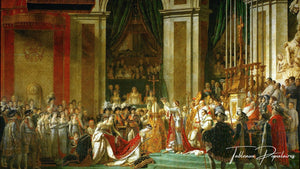
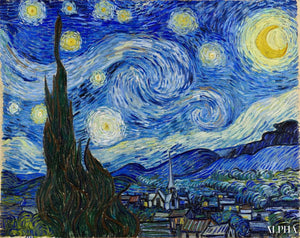
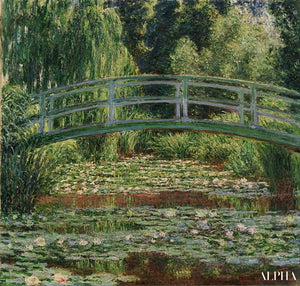
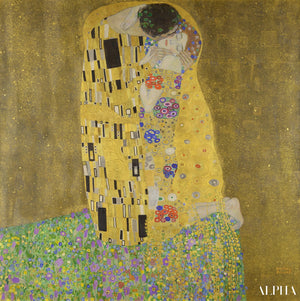
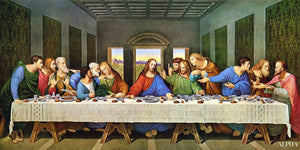

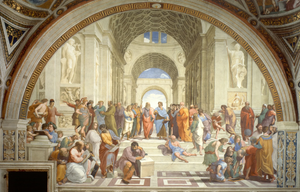
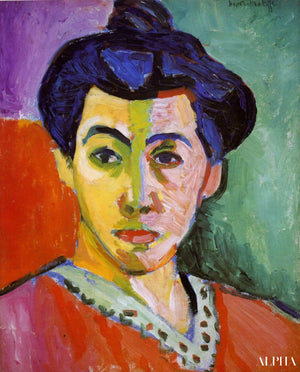
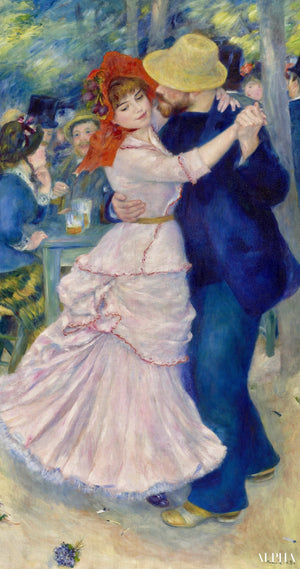


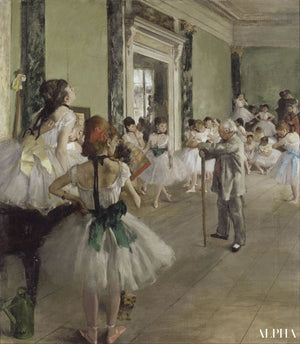
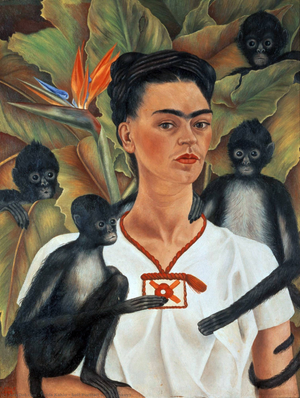


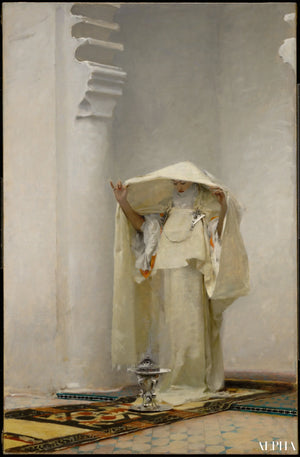
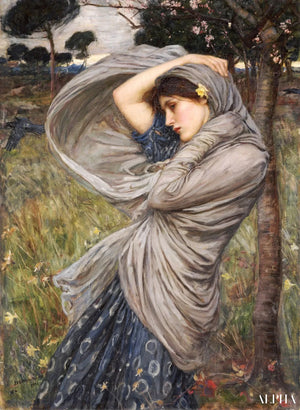







0 comments